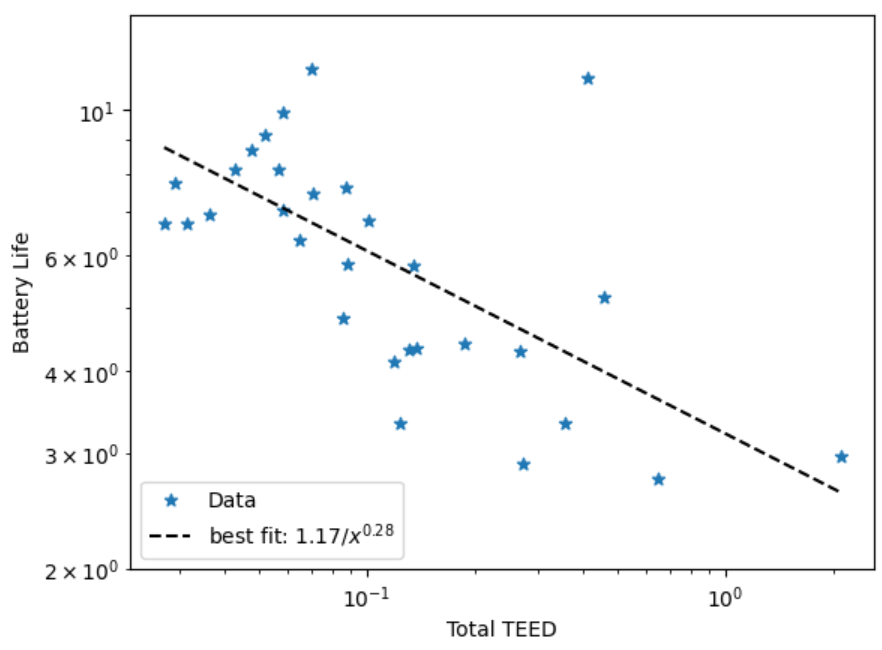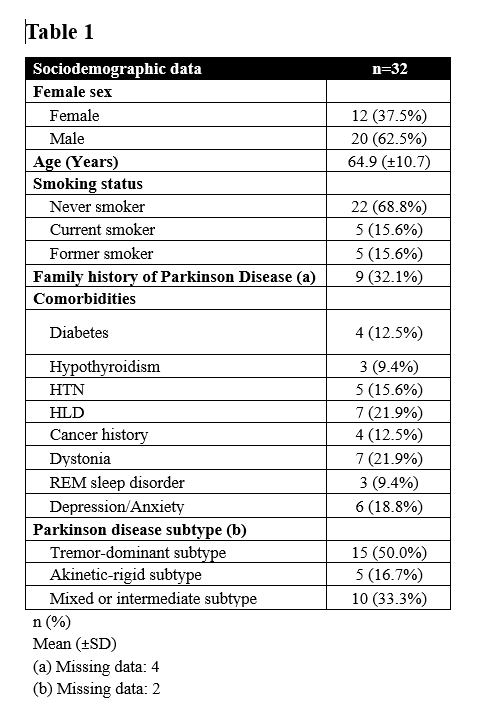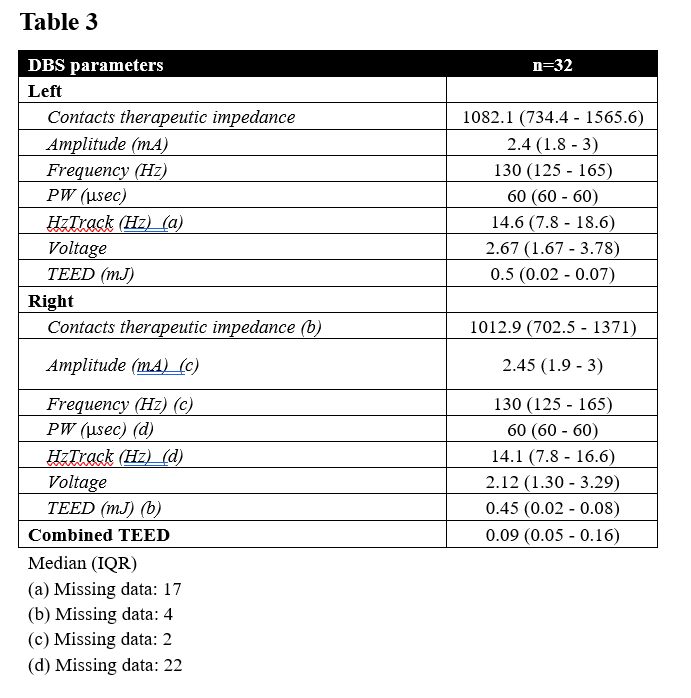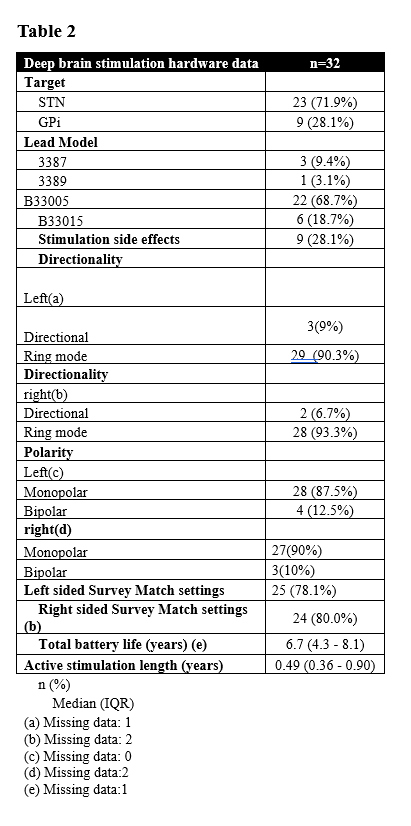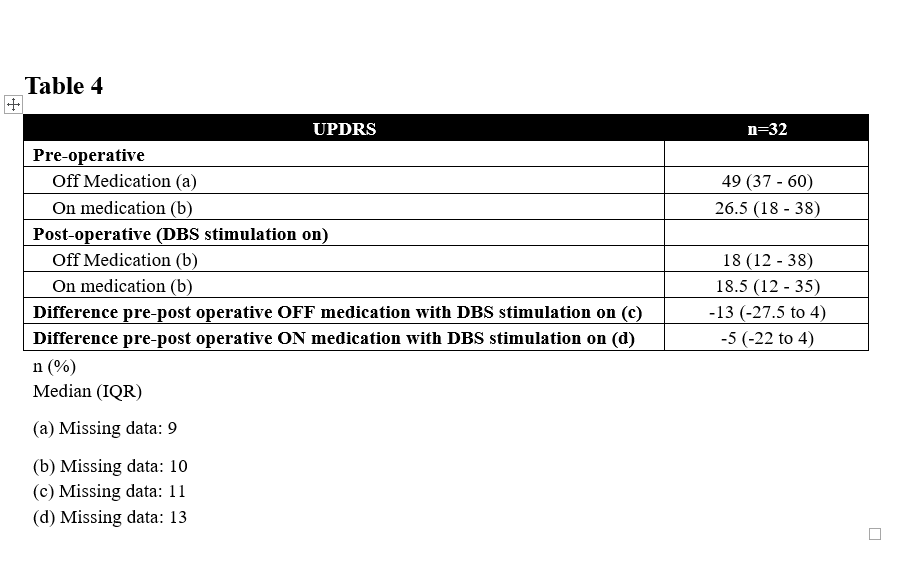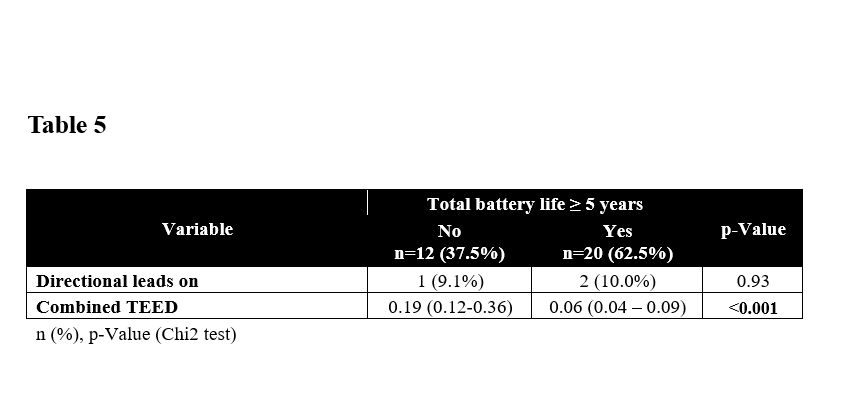Category: Parkinsonism, Others
Objective: This study aims to assess the estimated battery longevity and its determinants in Percept model of Deep Brain Stimulation (DBS) devices in patients diagnosed with Parkinson’s Disease (PD).
Background: DBS is a transformative modality for treatment of advanced Parkinson’s Disease . While DBS offers substantial symptomatic improvement, the longevity of the Implantable Pulse Generator is a factor that significantly affects patient quality of life and healthcare costs (1, 2). Understanding the interplay between stimulation setting and battery life is critical for optimizing treatment strategies, reducing the frequency of surgical interventions for battery replacement, and ultimately improving the care of PD patients.
Method: A retrospective analysis was conducted to examine the battery longevity of Percept deep brain stimulation (DBS) devices in 32 patients with PD. The study encompassed demographics, clinical information [such as the Unified Parkinson’s Disease Rating Scale (UPDRS) score], stimulation target and stimulation parameters, hardware specifics, directional stimulation, stimulation mode, and the Total Effective Energy Delivered (TEED).
Results: : Patients were predominantly male (62.5%) with an average age of 64.9 years. The most common subtype of PD was tremor-dominant (50%). The DBS targets included STN (71.9%) and GPi (28.1%). The median total battery life was 6.7 years, and the median active stimulation duration was 0.49 years, with a median TEED of 0.09. Improvements in UPDRS motor scores were evident, with reductions observed both when ON medications (-5 points) and OFF medications (-13 points). There was no significant association with the use of directional stimulation (p=0.93). The correlation coefficient between TEED and longevity was -0.37, with a p-value of 0.039. Additionally, a generally inverse correlation was identified, adhering to the function y₀ = a/xb, indicative of an approximate inverse dependence on TEED.
Conclusion: These insights are pivotal for fine-tuning the stimulation parameters to use energy more efficiently to extend battery life without compromising therapeutic outcomes. Careful management of the TEED can prolong the battery lifespan of Percept DBS devices, which is a critical component of care for patients with Parkinson’s Disease.
Best fit
Table 1
Table 3
table 2
Table 4
Table 5
References: 1. Fakhar K, Hastings E, Butson CR, Foote KD, Zeilman P, Okun MS. Management of Deep Brain Stimulator Battery Failure: Battery Estimators, Charge Density, and Importance of Clinical Symptoms. PLoS One. 2013 Mar 11;8(3):e58665. doi: 10.1371/journal.pone.0058665. PMID: 23536810.
2. Van Riesen C, Tsironis G, Gruber D, Klostermann F, Krause P, Schneider GH, Kupsch A. Disease-specific longevity of impulse generators in deep brain stimulation and review of the literature. J Neural Transm. 2016 May;DOI 10.1007/s00702-016-1562-1.
To cite this abstract in AMA style:
F. Yazdanian, A. Enriquez-Marulanda, N. Dehmamy, J. Shils, R. Alterman. The impact of stimulation setting on Battery Longevity in Deep Brain Stimulation [abstract]. Mov Disord. 2024; 39 (suppl 1). https://www.mdsabstracts.org/abstract/the-impact-of-stimulation-setting-on-battery-longevity-in-deep-brain-stimulation/. Accessed December 12, 2025.« Back to 2024 International Congress
MDS Abstracts - https://www.mdsabstracts.org/abstract/the-impact-of-stimulation-setting-on-battery-longevity-in-deep-brain-stimulation/

